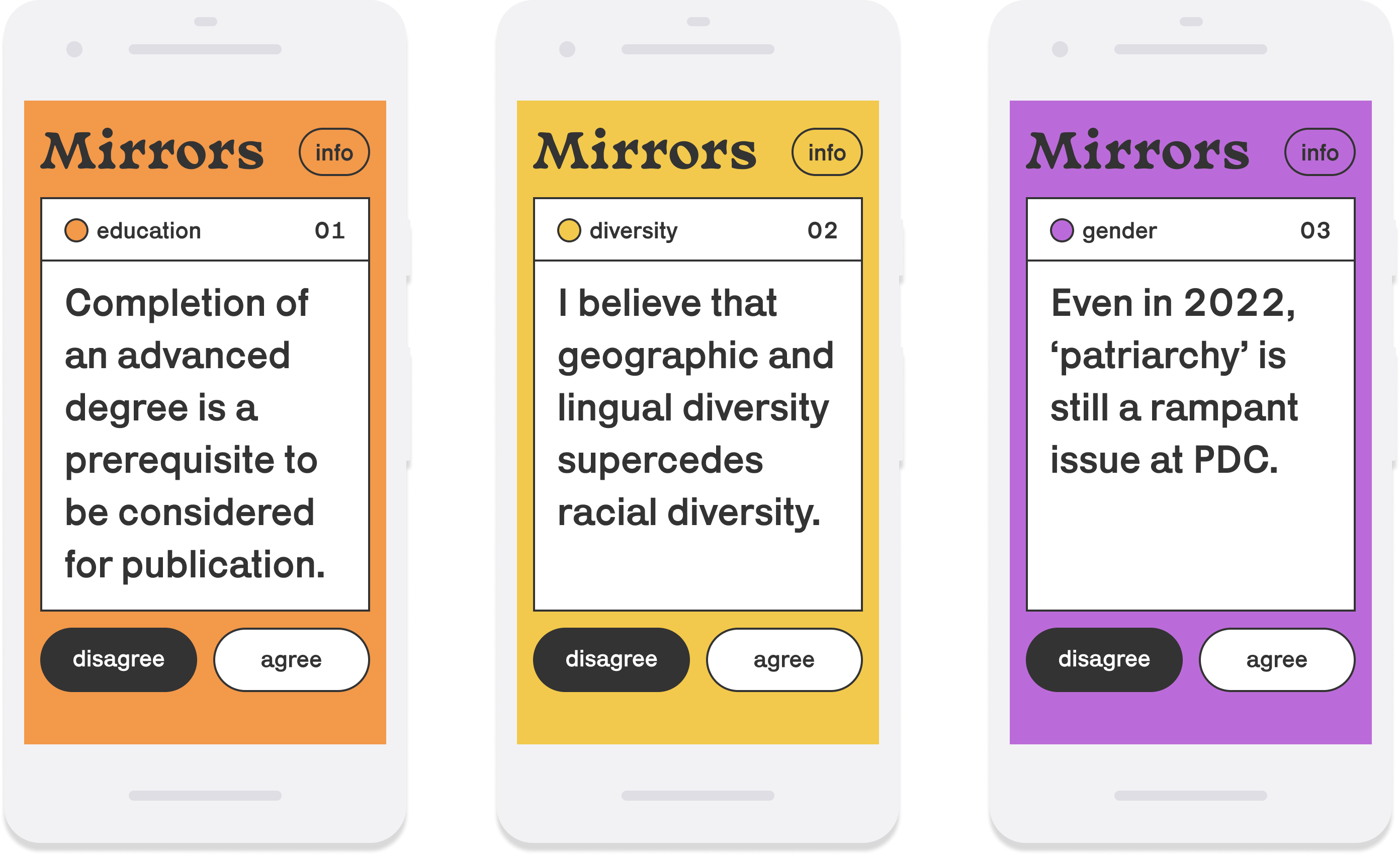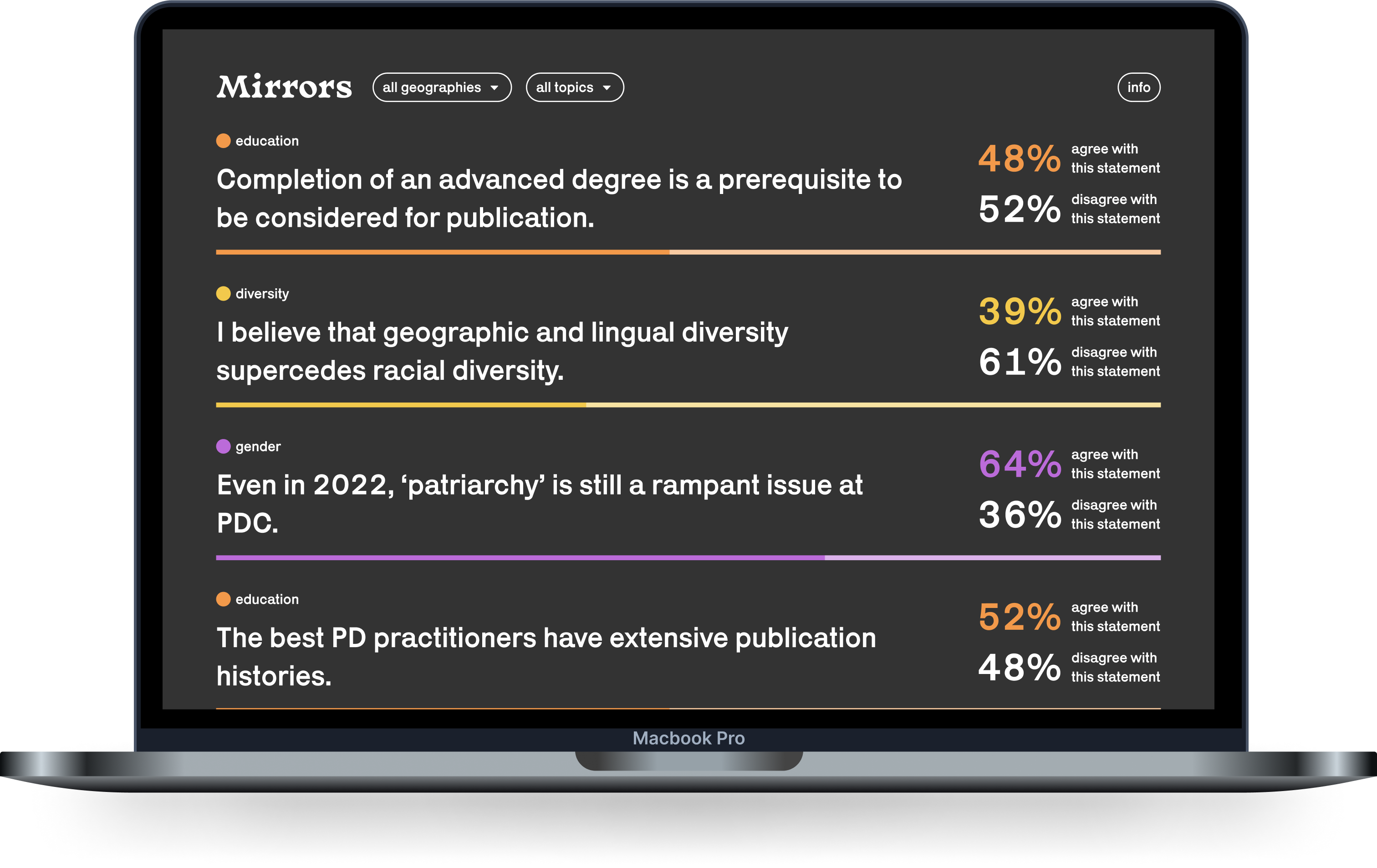Mirrors
- Mediumweb application
- Year2022–present
- VenuesParticipatory Design Conference (PDC), Situated Actions - Newcastle, United Kingdom

Context
Since its first edition in 1990, the Participatory Design Conference (PDC) community has continued to evolve by bringing together researchers and practitioners from diverse disciplinary and cultural backgrounds [1].
A key aspect at the center of this community’s practice has been research and design exploration in the context of Information and Communication Technologies [2,3].
Since the 1990s the PDC community has investigated Participatory Design (PD) practice in diverse and multi-faceted directions - from work focused on accountability and user involvement in the design process [4,5] to best processes and tools to enable diverse stakeholders to engage in co-design activities [6,7,8,9], experimental innovation and open-ended processes [10,11,12,13,14], PD practice decolonization [15,16,17] and pluriversality in PD practice [18,19] to name a few examples.
Over the past three decades PD practice evolved greatly, as did its community. However, while PD practice and its evolution is documented [20,21,22,23], our understanding and documentation of how the PD community itself evolved over time is limited.
What forces and power dynamics drive PD practice and the PD community? Who are we? What variations exist in our community? What relationships exist between our community’s multiple cosmologies and the ways in which we - as an aggregate and as individuals - make decisions, relate to each other, co-create and explore the future of PD practice? How big is the gap between our shared, collective values and individual beliefs? How do these values compare among geographies?
Aligned with PDC22’s aim of “expanding worlds of Participatory Design”, this Situated Action ultimately aims to expand the PD community’s understanding of itself while investigating and embracing its socio-political agency in PD practice evolution.
Technical description
The mobile experience leverages binary design techniques used by dating apps such as Tinder to offer participants the opportunity to agree or disagree with PDC-relevant statements. Statements range from personal or cultural beliefs to professional approaches and attitudes in relation to PD practice.
Each time a participant agrees or disagrees with a statement, aggregated data is updated and visualized real time on a global dashboard. Participants can respond to as many statements they wish and, regardless of how many responses they provide, have the ability to immediately visualize aggregate responses.
The experience additionally offers the opportunity to segment aggregated data by geographic location as well as topic. The geographic locations covered by the app coincide with the regions where PDC Places take place.
